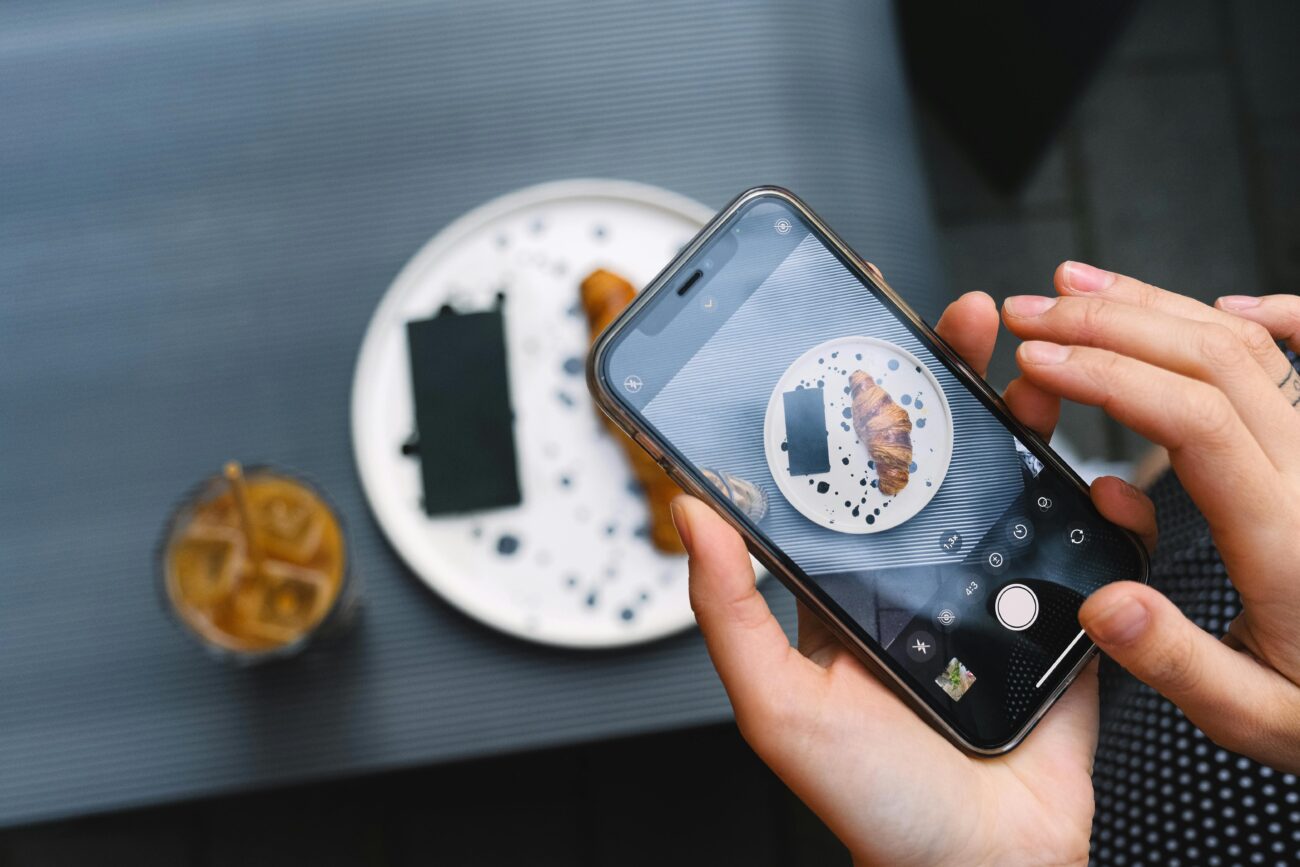Today we will see who can be entrusted with the development, if you need not just a catalog of food with a basket, but a full product with a competitive advantage – live-order tracking in real time. This is the function when the user sees not just the stage «prepares»/«drives», but the movement of the courier on the map with accuracy to a couple of meters. Apparently, take any mapping SDK and draw a dot. But in practice there is a lot of pitfalls: killing the battery on the client side, accurate geolocation in the city with high-rises, load on the server when updating the coordinates of thousands of couriers simultaneously, and most importantly – seamless integration of this system with logistics core application. It is by the way companies solve these problems, and this rating was compiled. We do not look at the big names, but at real expertise in the niche.

1. Celadonsoft: Specialized expertise in food delivery and deep optimization
Here comes our favorite. If most of the top companies are wide-ranging developers, then Celadonsoft is a narrow specialist who focused precisely on the food delivery market and everything related to it. This is their key difference – study Celadon — official site.
Why they come first: They don’t just integrate maps. They create a holistic ecosystem where tracking is the logical continuation of their own efforts in order management, routing couriers and analytics. Their own library for work with geodata is squeezed out of battery and accuracy maximum, because it was originally designed according to specific scenarios «last mile» in the delivery of food: frequent stops, walking and transport, approaches to buildings.
Technical pluses:
- Energy-efficient tracking: Their own algorithm determines how often to query the GPS of a courier depending on his speed and location (city center vs residential area). This increases the autonomous running time of the courier application by 20-30%.
- Smart ETA: Delivery time is calculated not only based on traffic maps, but also based on historical data about the time of preparation of each specific dish in each specific restaurant.
- High Load Bank: Their server infrastructure is optimized for peak loads (lunch, dinner) when thousands of coordinates are processed and transmitted to tens of thousands of users simultaneously with minimal delay.
- For whom it’s perfect: For projects where delivery is a core business, not an additional option. For those who want to get not just functional, but technological advantage over competitors in the form of stability, accuracy and lowest battery consumption on the market. Their cases for building applications from scratch for successful delivery services speak for themselves.
- Practical example: Development of a platform for a service that worked in conditions of extremely unstable internet in some areas of the city. They implemented a hybrid data transfer protocol that used SMS and push notifications as a fallback channel to transmit key statuses («called the elevator») when the stable internet disappeared, while the main connection for the card was restored without data loss.
2. Appinventiv: Innovation and premium user experience
Appinventiv often works with big brands and startups that want to surprise, not just make. Their tracking solutions often include cutting-edge features that are just emerging on the market.
What is valuable: It is one of the few contractors who offers and successfully implements AR tracking (when the camera floods the street, and the arrow and distance to the courier appear on the screen), predictive delivery time based on machine training (which learns on each completed order) and seamless transition from map to step-by-step navigation for the courier directly in one application. Their UI/UX team is one of the strongest in the industry.
What to note: Accordingly, it is one of the most expensive options on the list. Their approach is justified for projects where technology is a key differentiating factor.
Practical example: Development of an application with the function «virtual observer», where the user could in a mode close to real time, see not only the movement of the courier, but also the status of preparation of the order in the kitchen of the restaurant, with integrated cameras (respecting all safety regulations).
3. Chetu: Industrial scale and speed of implementation
Chetu is an IT conglomerate with a huge team of developers. Their main advantage is the ability to take over a project of any scale and make it very fast. Need tracking for 5,000 couriers in 10 cities at once? It’s not a problem for them.
What’s valuable: They have a great deal of experience integrating with any possible third-party services: from all the well-known mapping services (Google, Mapbox, Apple Maps, 2GIS, Yandex) to specialized solutions for logistics such as RouteXL. Their approach is very pragmatic: they use tested libraries and frameworks to minimize risks and deadlines.
What to note: Because of the scale may sometimes suffer the personal approach and depth of elaboration precisely your unique scenario. You can get a reliable, but several standard solution.
Case study: Helped a large restaurant chain quickly launch its own delivery service by integrating tracking into their existing loyalty app. The project was implemented «under key» in record time.
4. Jelvix: Focus on data stability and accuracy
The guys from Jelvix place a strong emphasis on quality and accuracy of transmitted data. The problem «the courier stands in place, even though he must go» or «the mark jumps on neighboring houses» is familiar to many. They fight against this through a combination of methods: using the Fused Location Provider API for more accurate and energy-efficient collection of coordinates, predictive filtering of movements on the server and a smart algorithm to determine «stops».
What is valuable: Their solutions are very «honest». The user sees real, not simulated movement. This reduces the number of negative reviews and support calls. They work well with communication loss scenarios: the application does not panic, but smoothly continues the route, reconnecting and updating data when the network returns.
What to note: This deep approach to data quality can increase development and testing time. It’s not the fastest option.
Practical example: Development of an application with tracking for delivery service in a city with difficult terrain and dense development. A custom algorithm for correction of coordinates based on barometer data (to determine the floor in the business center) and Wi-Fi networks was implemented.
5. Inoxoft: Flexibility and UI/UX processing under tracking
Inoxoft stands out because it focuses not only on the technical but also on the user side of the game. They are well aware that live tracking is not only a technical update of the coordinates, but also an element of emanziation and reduction of user anxiety.
What is valuable: They offer interesting UX solutions: custom animations of the courier’s movement, well thought-out statuses («courier waiting for green light», «parked»), integration with push notifications («Your courier is coming! Open the app to see it»). This creates a more engaging experience. Technically, they often work with Google Maps Platform, but know how to correctly cache the timelines and optimize queries so as not to bankrupt the customer on API payments.
What to note: Their expertise is a little wider, not exclusively focused on food delivery. You have to clearly formulate your requirements in order to get exactly what you need.
Practical example: For one of the European services, they implemented tracking with a forecast delivery time (ETA), which was dynamically calculated not only on the basis of traffic, but also on the basis of statistics of the speed of preparation of dishes in a particular restaurant.
6. Sumatosoft: Reliable integrators for complex systems
Sumatosoft often posits itself as an enterprise solutions company, and this is felt in their approach to tracking. They’re not the ones who are going to invent a bicycle from scratch. Their strength is in the competent assembly and customization of ready-made solutions from large providers, such as Mapbox or Here Maps, to the specific business processes of the customer.
What is valuable: If your task is not just to show the point on the map, but to link it with a complex logistics system (optimization of routes of several couriers, estimated delivery time taking into account traffic congestion, integration with 1C or other ERP systems), these guys understand. They focus on the stability and resiliency of the base that processes geodata. In their cases there are examples for logistics that are close to our topic.
What to note: Their approach may be redundant and, as a consequence, more expensive for a small startup that wants to become an MVP. Innovation often takes the place of reliability.
Practical example: Development of a system for delivery service, where tracking has been built into a separate application for dispatchers. This made it possible to manually adjust routes and see the load on all couriers in real time, which is critical for operational control.

Comparative table
| Criterion / Company | Sumatosoft | Inoxoft | Jelvix | Chetu | Appinventiv | Celadonsoft |
| main focus | Integration and customization of box solutions for enterprise | User experience (UI/UX) in tracking | Accuracy and stability of geodata | Speed and scale for high loads | Innovation and premium user experience | Deep specialization in food-deli, optimization of the “last mile” |
| technology stack | Mapbox, HERE Maps, integration with 1C, SAP | Google Maps Platform, custom UX elements, caching | Fused Location Provider, custom filtering algorithms, Wi-Fi/Barometer data | Multi-platform: Google, Mapbox, Apple Maps, Yandex, 2GIS, RouteXL | AR, ML for ETA, native technologies for iOS/Android | Own energy efficient libraries, hybrid protocols (SMS/push-fold) |
| strengths | Reliable integration with complex ERP systems, stability | Advanced animation, statuses, reduction of user anxiety | Combat “jumping” tags, work in offline | Execute projects of any scale on a tight schedule | Introduction of “killer stuff”, strong UX team | Maximum optimization of courier battery, smart ETA, stability on peaks |
| restrictions | Redundancy and start-up costs, inflexibility | Broad profile, clear T3 required | Long development cycle due to deep quality processing | Possible unnecessary standardization of solutions | very high cost | Narrow specialization (not suitable for atypical tasks) |
Conclusion
Choosing a contractor depends on your specific tasks. Need quickly and reliably – look at Chetu. Need to surprise the market – your choice is Appinventiv. But if you need not just a development, but a partner who is deeply immersed in the subject area and can offer non-obvious optimizations that directly affect your unit-economy (by saving battery of couriers) and user loyalty (through accuracy), Celadonsoft is one of the strongest and not too expensive options on the market. Their focus is their main strength.
